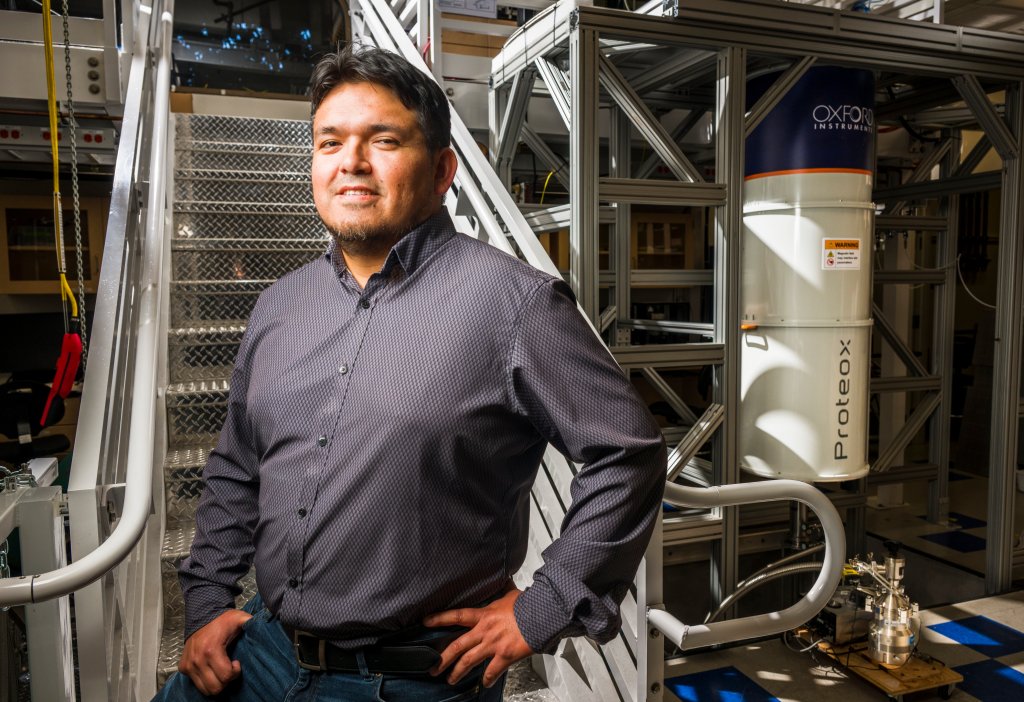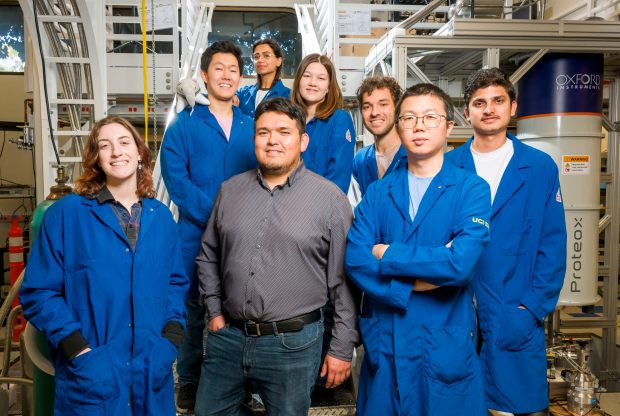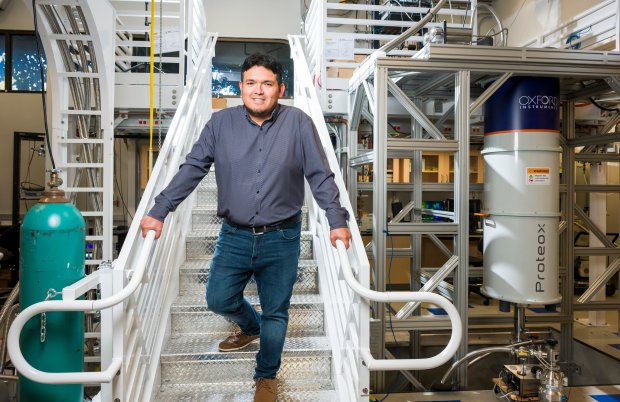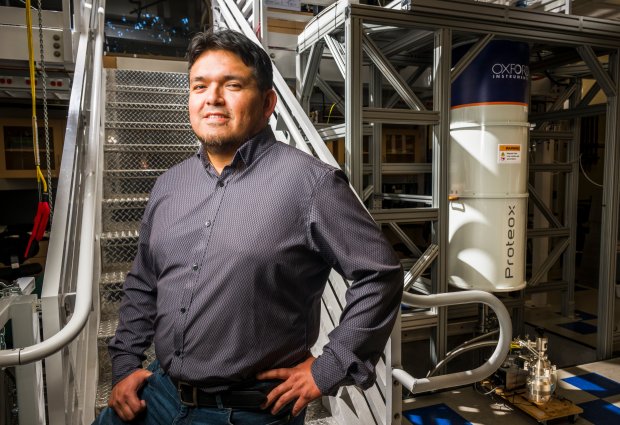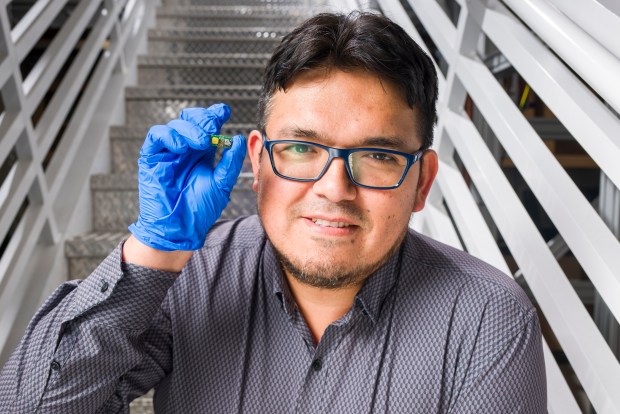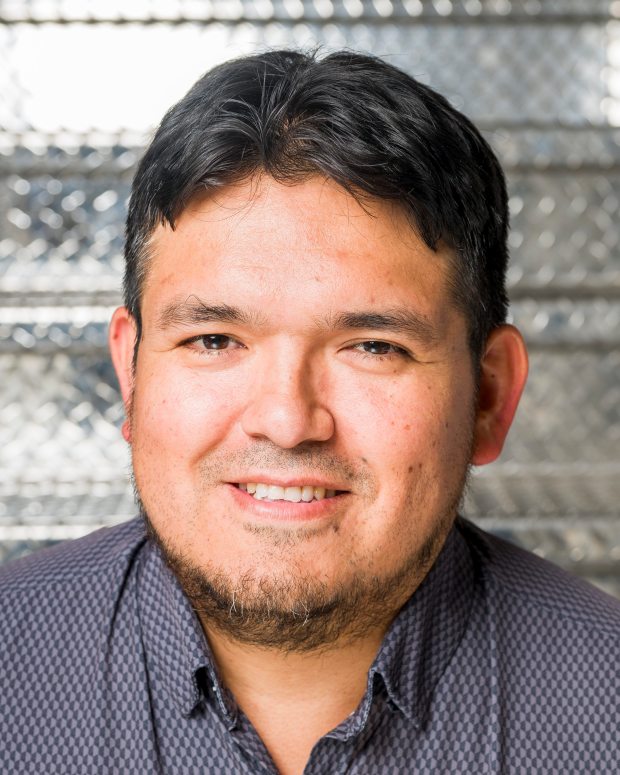Luis Jauregui, a professor at UC Irvine, is an expert in quantum physics who is smart enough to describe his work in terms that are foreign to a non-scientist, yet affable enough to explain it anyway, without making any non-scientist feel dumb.
This is a particularly good mix of traits. In a talk-to-the-hand era of government funding, scientific explanations can be an existential issue.
And Jauregui, it happens, has a great story to explain. The quantum materials that he and his students work on in a gloriously chaotic lab at UCI’s Rowland Hall are challenging, but they’re also interesting enough to be the grist for everything from sci-fi movies to seemingly endless Quora threads about the multiverse.
They’re also small. So small, in fact, that without instruments (and theories) concocted just a few years ago, Jauregui and his team would have a hard time proving the quantum stuff they work on even exists.
“It’s not an invention, exactly. It’s an idea, or a theory, that, through our work, we can show to be true,” Jauregui said of his and much other quantum science research.
“Reality already exists,” he added. “We just don’t fully understand its rules at the quantum level.”
But at least one possible result of his newest work is actually fairly easy to explain and, it turns out, potentially huge:
“It’s something that could lead to computers that aren’t affected by radiation,” Jauregui said.
Then, as Jauregui noticed his listener wasn’t quite grasping the importance of this, he added:
“It’s something that could be used during deep-space travel.”
It also means, among other things, that his work has access to money.
Jauregui’s lab is just a small cog in a much bigger (and growing) world of quantum research. Scientists at UCI, UCLA and Caltech, among others, are using the theories of quantum physics to prove the existence of new quantum materials and, ultimately, to create new products. Much of that work is getting private and public funding, even in a time when government spending on science is drying up, because the discoveries could fuel quantum computing, which is widely viewed as a potential growth industry over the next few decades.
But if that research didn’t have a clear path to profit, the federal funding for it might shrink or go away entirely.
In July, the Union of Concerned Scientists issued a report showing that during the first six months of this year, federal scientific research grants fell by half when compared to the same period of every year since 2016. The group also suggested that federal funding for basic research – code for scientific inquiry that isn’t aimed at an as-yet identified new business or industry – is vanishing.
Many scientists, Jauregui included, say this version of austerity isn’t just bad for researchers, they argue it’s also short-sighted for taxpayers and consumers.
“Basic research isn’t a waste. It’s anything but that,” Jauregui said.
“All kinds of research can always lead to something.”
Spin
The something recently proved to exist by Jauregui and a post-doctorate researcher in his lab, Jinyu Liu, is about this: excitons.
The word describes what happens when electrons are coerced to spin in tandem, as opposed to spinning in opposite directions, which is the default state of most electrons most of the time.
The spinning together business is nothing less than a new version of quantum matter.
Note the modifier. Quantum matter isn’t the same as the non-quantum matter you may or may not have studied in high school chemistry.
That old-school definition says the stuff that makes up much of the known universe comes in four basic states – liquid, solid, gas and plasma (the stuff of the sun and stars and, as the name suggests, plasma balls). But in the quantum world, matter takes on other forms – superconductors, magnets, topological insulators and, potentially, a slew of other states that non-quantum scientists haven’t even contemplated.
Quantum versions of matter don’t replace the classics. Instead, they describe the behavior of electrons within a solid, such as hafnium, or iron, or any other hard element.
Which gets us to the Jauregui and Liu excitons.
About two years ago, Liu presented a paper to Jauregui that suggested problems in some existing theories about quantum stuff that are far too intricate to describe here.
What’s key is this: In Jauregui’s world, problems – and especially mistakes – are good.
“Mistakes … tell us nature isn’t following the ‘script,’” he said. “That’s when things get exciting.”
And the questions raised in Liu’s paper, Jauregui added, “didn’t fit conventional explanations.”
Though the idea that electrons could form “holes” (partner electrons) and spin in tandem with those partners was first theorized in the 1960s, and has been widely discussed among quantum scientists ever since, it had never been observed. That’s because the conditions to make such an observation happen are, according to Jauregui, “very delicate.”
How delicate?
To prove that excitons exist, Jauregui and Liu subjected electrons of the element hafnium to a magnetic field that was about 700 times more powerful than the magnets on your fridge. They conducted this test at a temperature more common in deep space than anywhere on Earth. “Siberia,” Jauregui said, “is a lot warmer.”
Such conditions are created at a lab in Los Alamos, New Mexico, the same place where much of the research and testing of the atomic bomb was conducted more than 80 years ago.
After many trips (most by Liu) to New Mexico, and a lot of late nights poring over data, they came to believe that they had, indeed, proven the existence of a new state of quantum matter.
Someday, their work could lead to new drivers for quantum computers – a type of computing that will swap out the binary, heat-producing guts of current computers with a form of computing that you might liken to a less chaotic version of the movie “Everything Everywhere All at Once.” Instead of tackling problems in a methodical (if increasingly fast) step-by-step method, as modern computers still do, quantum computers will conduct multiple steps simultaneously. And instead of electric-powered microchips, such computers could run on new chips that rely on, perhaps, the power produced by tandemly spinning electrons.
“It’s still early days, but in principle these states could be building blocks for new types of quantum bits or devices,” Jauregui said.
Taking stuff apart
The possibility makes Jauregui a rarity in 2025; a research scientist who isn’t overly concerned with money.
“Funding agencies want to support directions that open new frontiers. We have not received enough funding yet, but the (University of California’s Office of the President, the National Science Foundation, and Los Alamos National Laboratories) are funding our lab. And our lab is becoming one of the few places worldwide working on correlated topological matter at this level, so we are definitely on the leading edge.”
That “correlated, topological matter” is code for “stuff.” Whatever they are eventually called – chips or bits or transistors – the team in Jauregui’s lab works to create devices that eventually could power quantum computers, including some that are using the theory proven by his recent experiments. Jauregui, a theorist and an engineer who said he grew up “constantly taking stuff apart” in Peru, to parents with no science background, in a small town where his teachers eventually ran out of ways to challenge him.
“I didn’t envision being a quantum physicist back then, but there was a moment in high school, during my first taste of research, when I realized that discovery could actually be a job,” he said. “From that point on, the path felt possible.”
But Jauregui, like many others, also believes in the scientific power of serendipity.
A mid-1700s experiment with a kite led to the electrical grid that powers your refrigerator and, maybe, your car. The desire for scientists and others to share information during nuclear winter led to the Internet. The weight-loss drug Ozempic exists, in part, because of experiments that involved the venom of Gila monsters.
“Not many things are invented out of plans,” he said.
Others agree.
Jocelyn Read, an astrophysicist and professor at Cal State Fullerton, whose work in gravitational wave research has helped prove Einstein’s theory of relativity and the behavior of black holes and the formation of the universe, suggests basic science should be funded because it’s about people, not money.
“The fundamental drive to make sense of our world is inherent to most humans. When we look back at history, we take pride in how humans across the centuries have figured out the fundamental science of everything from planets to atoms to cellular life – even before we think about how that knowledge has led to the practical benefits like lifesaving medications and the technology that’s all around us today.
“Investing in basic research is saying that, ‘Yes, we too want to make lasting contributions to how we understand the universe.’”
Christopher Dann, a medical student at UCLA who spoke at an event highlighting recently defunded research projects on campus, suggested basic research reflects a fundamentally human trait: curiosity. And he said that research is always profitable, even when profit isn’t defined by money.
“It’s impossible to know who these studies will subsequently inspire, or what they will reveal.”
Jauregui agrees. He described his next planned experiments – building on his work with Liu on excitons to possibly discover even more new versions of matter – as a new round of mysteries.
“Every time we look, with better tools and purer materials, nature surprises us,” he said.
